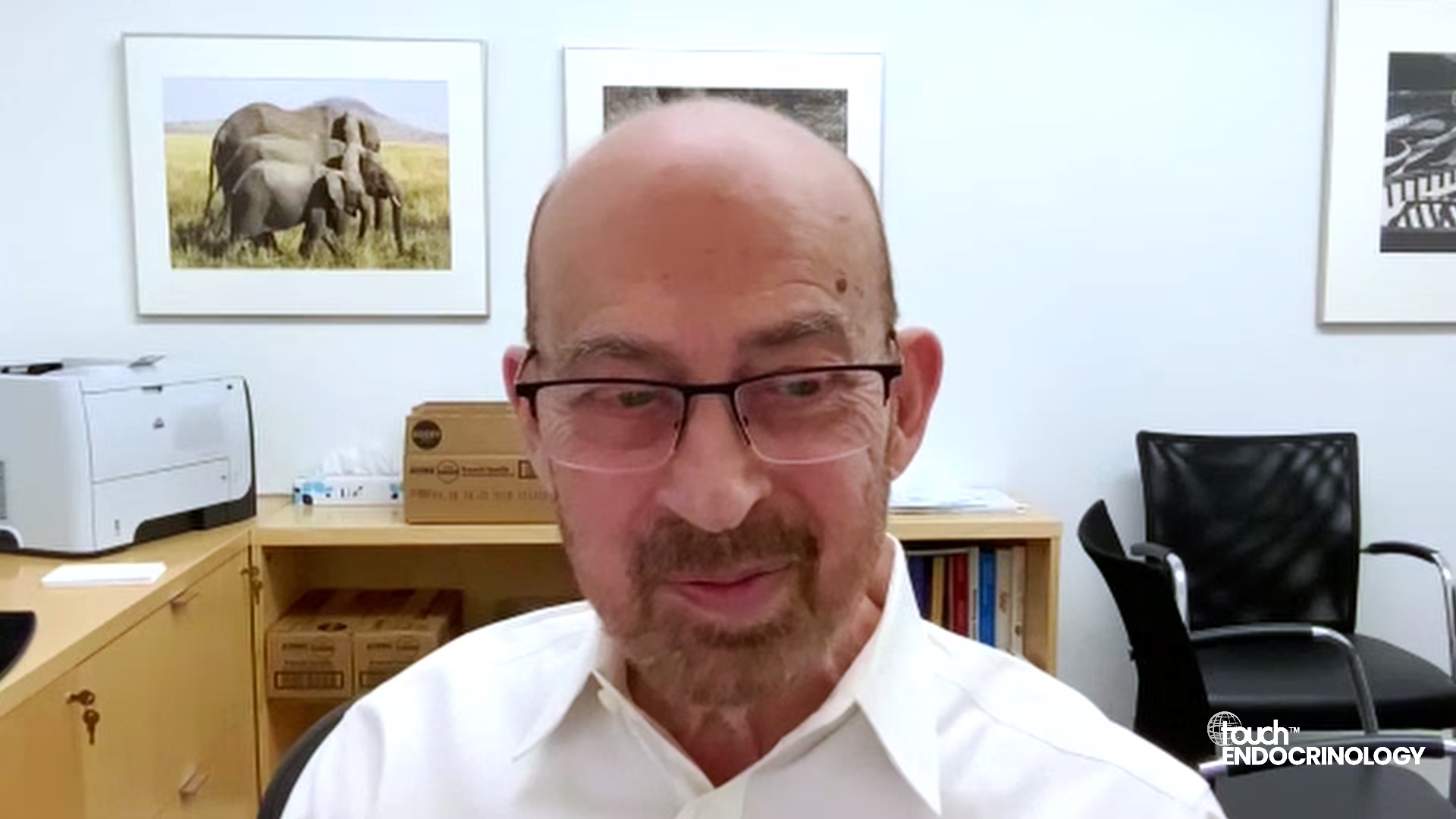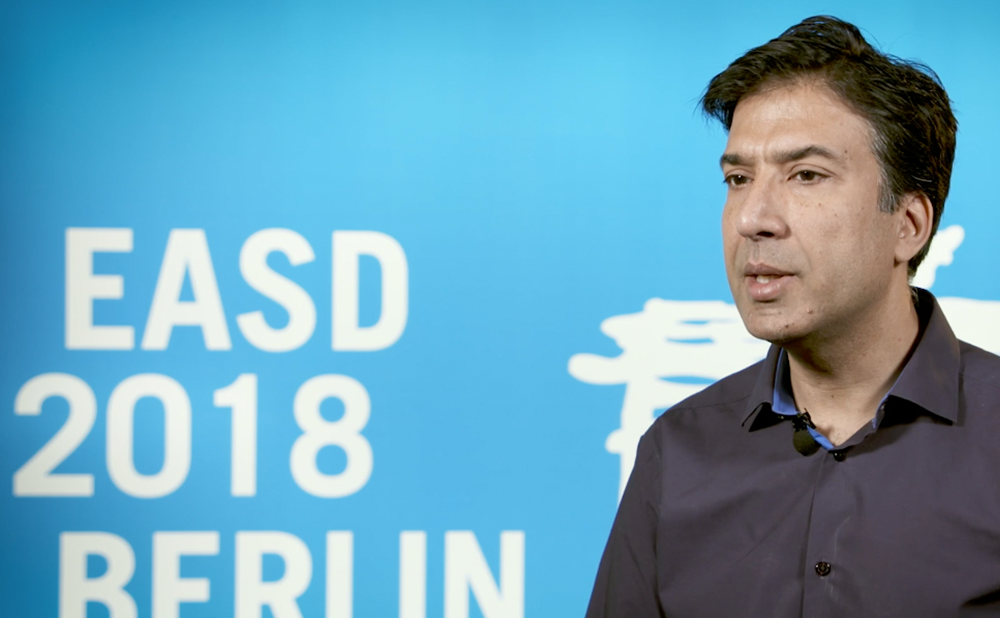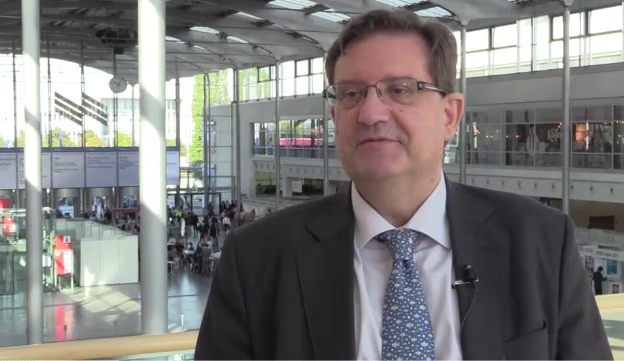Dr. Carolina Solis-Herrera (Associate Professor of Medicine at the University of Texas Health San Antonio (UTHSA) and Chief of Endocrinology Division) provides an overview of their presentation: Empagliflozin Improves Cardiopulmonary Function and VE/VCO2 in Patients with T2D and HFrEF at ADA 83rd Scientific Sessions, 2023.
Questions:
- What led to the hypothesis that empagliflozin might be useful in the treatment of type 2 diabetes (T2D) and heart failure with reduced ejection fraction (HFrEF)? (00:22)
- Could you tell us about the aims, design, and eligibility criteria of the study? (01:34)
- Can you give a brief overview of the study outcomes, and discuss the strengths and limitations of the study? (04:20)
- In light of this, what do you think will be the likely clinical impact of these findings, and the next steps? (05:04)
Disclosures: Carolina Solis-Herrera has no potential conflicts to disclose.
Support: Interview and filming supported by Touch Medical Media. Interview conducted by Zoë Sidwell.
Filmed as a highlight of ADA 2023.
Transcript
Thank you so much for having me. My name is Carolina Solis and I’m an Associate Professor of Medicine at the University of Texas Health San Antonio, and I’m the Chief of the Endocrinology Division.
What led to the hypothesis that empagliflozin might be useful in the treatment of type 2 diabetes and heart failure with reduced ejection fraction?
So we know that since 2008 the FDA mandated that all medications that are meant for the treatment of diabetes are meant to complete a cardiovascular outcome trial. So in 2015, we saw the publication of the EMPA-REG OUTCOME trial which showed us that not only your sugar comes down with this class of medications, the SGLT2 inhibitors, but what we also saw is that the 3-point MACE, which is cardiovascular death, non-fatal MI, and non-fatal stroke, also improved on the treatment arm. The other very interesting thing that we saw with the EMPA-REG OUTCOME trial was that the patients with heart failure had a decrease in hospitalization for heart failure, and these patients had reduced ejection fraction. So at the time, we didn’t have any idea how these medications were causing these cardiovascular benefits and, since then, we have been focusing on efforts on trying to figure out the mechanisms of action of SGLT2 inhibitors that promote these cardiovascular effects.
Could you tell us about the aims, design, and eligibility criteria of the study?
So, as I mentioned, there are multiple theories by which probably these medications promote in many ways the cardiovascular benefits. One of them is improving glucose, improving weight, improving blood pressure. However, one of the things that we also realized from these medications is that they increase your plasma ketone levels. So we were one of the first groups to show that the plasma ketone levels go up about four times from baseline when you take one of these drugs for over 12 weeks. So based on that, we believe that ketones work as a super fuel for the heart and probably other organs improving their function. So what we did in this study, our hypothesis, is that we believe that we can extrapolate these benefits from the ketones to other organs including the skeletal muscle and that this would translate into better skeletal muscle function, better mitochondrial function, better energy production, and that we could assess that by multiple ways. So we designed a study where we took patients with type 2 diabetes, heart failure with reduced ejection fraction, and what we did is a cardiac MRI, we did a skeletal muscle MRS to assess ATP production at baseline during rest and after exercise, and then we did a six-minute walking test. So those were the baseline studies and, after that, the patients were randomized to either placebo or SGLT2 inhibitor empagliflozin 25 milligrams. This was a double blind study, and they were given the medication for 12 weeks. After that, the baseline studies were repeated and that was the end of the study. So regarding the results, some of the very interesting things that we found is, number one, that this medication, the patients on the treatment arm, improved their VE/VCO2 ratio, which is a prognostic marker of mortality in patients with heart failure. We also saw that the patients on the treated arm improved their six-minute walking test, while the patients on placebo actually were not able to walk the same distance as in the beginning, they walked less, and third, of course, we saw an improvement in ejection fraction. So all those findings are very reassuring for us.
Can you give a brief overview of the study outcomes, and discuss the strengths and limitations of the study?
So we’re very happy to report that the prognostic markers that we’re analyzing so far, the VE/VCO2 ratio and six-minute walking test are improved in the patients that are in the treatment group with empagliflozin compared to placebo. The other thing that we’re very excited about is that this is the first time that this is being shown with these medications in this group of patients. Limitations of the study, of course, it’s a small group of people, it’s a small number of subjects. But we are very optimistic that, as we increase the number of subjects, the results will be a lot more clear.
In light of this, what do you think will be the likely clinical impact of these findings, and the next steps?
Although the numbers are small, we’re very optimistic that we’re going to obtain very positive results, and it would be for the very first time a novel mechanism to show us how SGLT2 inhibitors provide their cardiovascular benefits, and, if we can prove that, this will be novel insight for investigators to develop new therapies for the treatment of diabetes and the treatment of heart failure. So we’re really excited about the upcoming results. Finally, I would like to thank all the investigators that have collaborated in this study and also our volunteers because, without their commitment, these studies wouldn’t be possible. Also, thank you to our institution for their incredible support and thank you for promoting the scientific segment so we can disseminate this important information. Howdy from San Antonio.
Subtitles and transcript are autogenerated.









